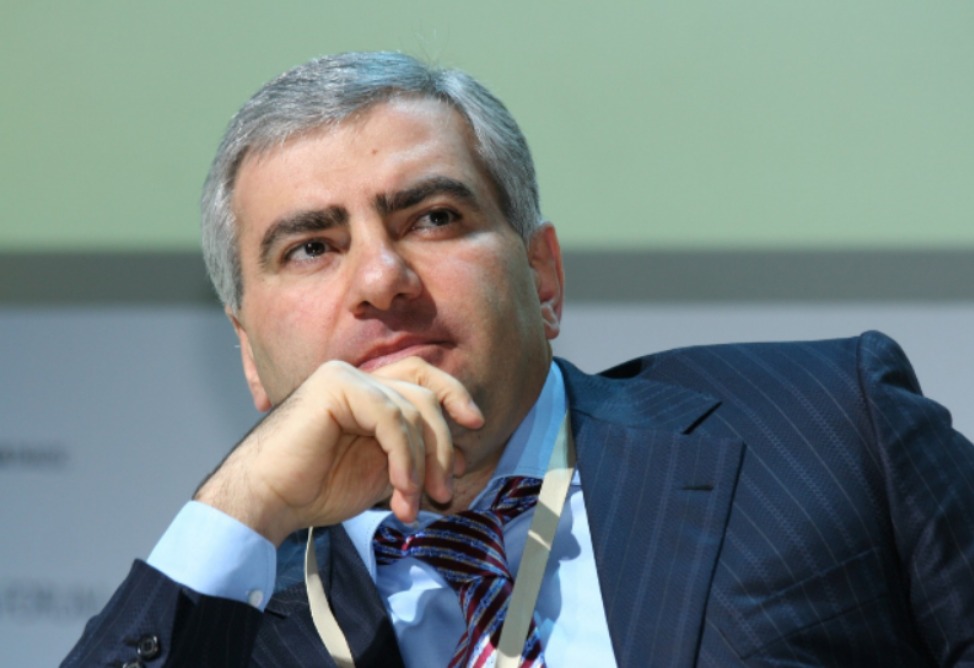Eurasian economic integration’s initial rapid progress ends- report
19.05.2017,
16:53
The Eurasian economic integration has achieved meaningful results but its initial rapid progress has ended.

YEREVAN, May 19. /ARKA/. The Eurasian economic integration has achieved meaningful results but its initial rapid progress has ended. This is proved, in particular, by difficulties in negotiating the Customs Code and the common market in medicines and medical goods. These were the two most important topics on the integration agenda in recent months, the consensus on which was hard to reach.
These findings of Eurasian Development Bank’s (EDB) Centre for Integration Studies are presented in its report Eurasian Economic Integration 2017.
A number of potential effects of Eurasian economic integration remained non-fulfilled. In 2011-2012, when the Customs Union emerged, there were many talks about possible competition between jurisdictions. This could result in a flow of thousands of companies from one country to another, for example, in order to enjoy more favorable taxation. Five years later it is clear that businesses’ anchorage to their native countries occurred to be stronger. This is due to the state’s significant share in economy and still high non-tariff barriers.
Negative developments in mutual trade and investments persisted. However, the decline in these indicators was significantly lower in the EAEU countries than beyond. The report suggests that the EAEU acts as somewhat of a buffer against negative external shocks. The intra-union trade fell by 6.7% (although its physical volumes increased by 0.4%), compared to a drop of 12% in the EAEU’s foreign trade. The values of the EAEU’s mutual trade are still dependent on global hydrocarbon prices, although this correlation is weakening. The dynamics of mutual FDI was also negative, but better than in the CIS region as a whole. In 2015, the figure was 14.3% lower than in the peak 2012, while the mutual FDI stock of CIS countries declined by 25.8% over the same period. Meanwhile, the routine, however no less important, work on trade policies goes on.
The report states that a positive factor is that the efforts to reduce non-tariff protection of the EAEU markets have become systematic. An information portal titled The Functioning of Domestic Markets in the Eurasian Economic Union was launched. Its main objectives are to monitor barriers to mutual trade and gather feedback from businesses. In 2016, the EEC prepared the White Book (published in 2017) – a document summarizing the existing barriers to the free movement of goods, services, capital and labor in the EAEU.
In 2016, the EAEU worked persistently on expanding its foreign economic ties. Free trade agreements with Egypt, Israel, India, Iran and Singapore are being considered. A common trade regime with Serbia is being devised. Negotiations are underway on a non-preferential agreement with China. Other potential partners include India, South Korea, Chile, Thailand and South Africa.
The report notes the emerging convergence of per capita incomes. Kazakhstan, Belarus and Armenia are catching up with Russia in terms of GDP per capita and are decreasing the gap by approximately 0.7-1.4 percentage points a year. The only country that lacked such dynamics was the Kyrgyz Republic.
Compliance with sustainable macroeconomic development criteria envisioned by the Treaty on the EAEU is a matter of concern. In 2016, all the member states had violations of some of the criteria. This is not critical to the EAEU in the short term, but would be a threat in the longer term.
EDB experts emphasize that EAEU development is not an abstract or theoretical issue. Eurasian integration is already affecting businesses and millions of people. Whether these processes (a common trade policy, free trade areas with dozens of partners all over the world, the lifting of the burden of non-tariff barriers, the functioning of the common labor market, and the convergence of macroeconomic policies) are successful or not is important to the long-term sustainable growth of the EAEU countries.
The Eurasian Development Bank (EDB) is an international financial institution founded by Russia and Kazakhstan in January 2006 with the mission to facilitate the development of market economies, sustainable economic growth, and the expansion of mutual trade and other economic ties in its member states. EDB’s charter capital totals US $7 billion. The member states of the Bank are the Republic of Armenia, the Republic of Belarus, the Republic of Kazakhstan, the Kyrgyz Republic, the Russian Federation, and the Republic of Tajikistan. -0-
These findings of Eurasian Development Bank’s (EDB) Centre for Integration Studies are presented in its report Eurasian Economic Integration 2017.
A number of potential effects of Eurasian economic integration remained non-fulfilled. In 2011-2012, when the Customs Union emerged, there were many talks about possible competition between jurisdictions. This could result in a flow of thousands of companies from one country to another, for example, in order to enjoy more favorable taxation. Five years later it is clear that businesses’ anchorage to their native countries occurred to be stronger. This is due to the state’s significant share in economy and still high non-tariff barriers.
Negative developments in mutual trade and investments persisted. However, the decline in these indicators was significantly lower in the EAEU countries than beyond. The report suggests that the EAEU acts as somewhat of a buffer against negative external shocks. The intra-union trade fell by 6.7% (although its physical volumes increased by 0.4%), compared to a drop of 12% in the EAEU’s foreign trade. The values of the EAEU’s mutual trade are still dependent on global hydrocarbon prices, although this correlation is weakening. The dynamics of mutual FDI was also negative, but better than in the CIS region as a whole. In 2015, the figure was 14.3% lower than in the peak 2012, while the mutual FDI stock of CIS countries declined by 25.8% over the same period. Meanwhile, the routine, however no less important, work on trade policies goes on.
The report states that a positive factor is that the efforts to reduce non-tariff protection of the EAEU markets have become systematic. An information portal titled The Functioning of Domestic Markets in the Eurasian Economic Union was launched. Its main objectives are to monitor barriers to mutual trade and gather feedback from businesses. In 2016, the EEC prepared the White Book (published in 2017) – a document summarizing the existing barriers to the free movement of goods, services, capital and labor in the EAEU.
In 2016, the EAEU worked persistently on expanding its foreign economic ties. Free trade agreements with Egypt, Israel, India, Iran and Singapore are being considered. A common trade regime with Serbia is being devised. Negotiations are underway on a non-preferential agreement with China. Other potential partners include India, South Korea, Chile, Thailand and South Africa.
The report notes the emerging convergence of per capita incomes. Kazakhstan, Belarus and Armenia are catching up with Russia in terms of GDP per capita and are decreasing the gap by approximately 0.7-1.4 percentage points a year. The only country that lacked such dynamics was the Kyrgyz Republic.
Compliance with sustainable macroeconomic development criteria envisioned by the Treaty on the EAEU is a matter of concern. In 2016, all the member states had violations of some of the criteria. This is not critical to the EAEU in the short term, but would be a threat in the longer term.
EDB experts emphasize that EAEU development is not an abstract or theoretical issue. Eurasian integration is already affecting businesses and millions of people. Whether these processes (a common trade policy, free trade areas with dozens of partners all over the world, the lifting of the burden of non-tariff barriers, the functioning of the common labor market, and the convergence of macroeconomic policies) are successful or not is important to the long-term sustainable growth of the EAEU countries.
The Eurasian Development Bank (EDB) is an international financial institution founded by Russia and Kazakhstan in January 2006 with the mission to facilitate the development of market economies, sustainable economic growth, and the expansion of mutual trade and other economic ties in its member states. EDB’s charter capital totals US $7 billion. The member states of the Bank are the Republic of Armenia, the Republic of Belarus, the Republic of Kazakhstan, the Kyrgyz Republic, the Russian Federation, and the Republic of Tajikistan. -0-



